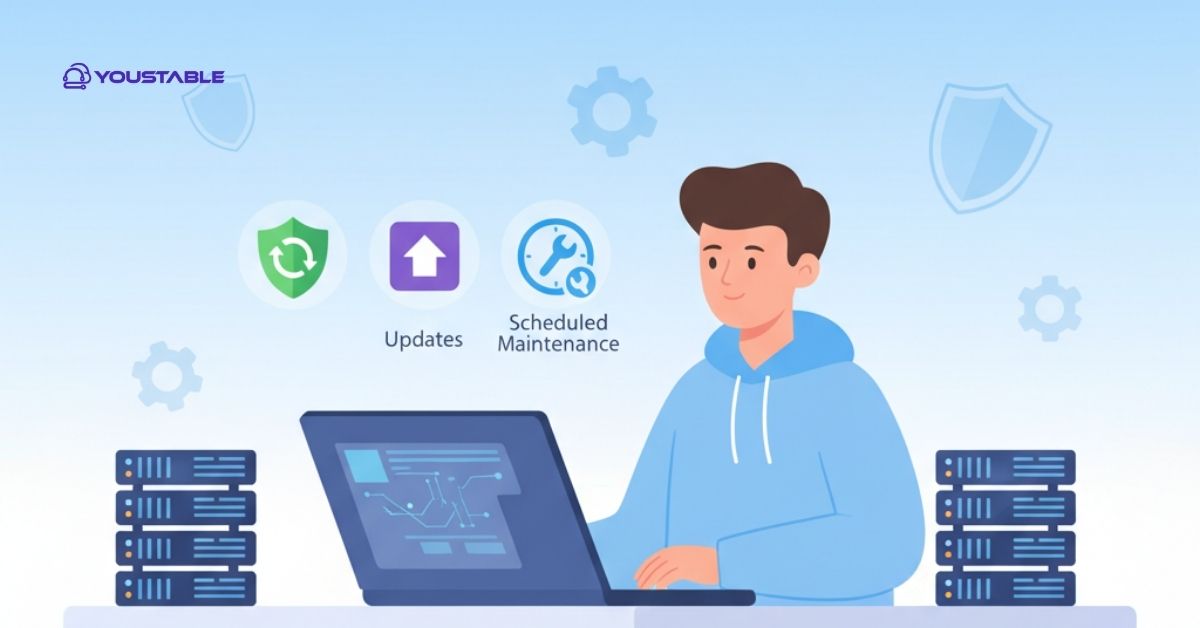Website downtime is a critical issue that can affect any online business, causing loss of visitors, revenue, and credibility. When your website is unavailable, users may leave, and search engines may lower your rankings. Downtime can result from various technical, security, or human-related issues that disrupt your site’s normal operation. Understanding these causes is essential to keep your website running smoothly and ensure visitors always have access to your content. Being proactive helps you avoid long periods of unavailability and maintain a professional online presence.

In this article, we will explore the top reasons for website downtime and provide practical ways to prevent them. From server problems to coding errors, security threats, and traffic overloads, you’ll learn actionable steps to keep your website online and running efficiently.
Reasons for Website Downtime and How to Prevent It
Website downtime can happen for many reasons—from server issues to security threats. Identifying these causes is the first step to preventing unexpected outages and ensuring your site stays online and accessible at all times.
1. Server or Hosting Issues
Server crashes, hardware failures, or overloaded hosting can make a website unavailable. Poorly managed hosting environments, limited resources, or outdated servers can all contribute to unexpected downtime, leaving visitors unable to access your site.
Choosing a reliable hosting provider with strong uptime guarantees, monitoring server performance, and upgrading hosting resources as traffic grows can help prevent server-related downtime. Ensuring your server can handle peak loads keeps your website accessible and stable.
2. Domain or DNS Problems
Expired domains, misconfigured DNS settings, or incorrect domain records can disrupt the connection between your domain and hosting. Even a small error in DNS configuration can make your website unreachable for hours.
To avoid this, always renew your domain on time, verify DNS settings, and use reliable DNS management tools. Regular checks and updates ensure that visitors can access your website without interruptions.
3. Website Coding or Plugin Errors
Outdated plugins, incompatible themes, or errors in custom code can crash your website or cause certain pages to fail. Even small coding mistakes can result in site instability and downtime.
Keeping all software up to date, testing new plugins in a staging environment, and reviewing custom code before deployment can prevent downtime caused by coding issues. Regular maintenance ensures smooth site performance.
4. Cyberattacks and Security Breaches
DDoS attacks, malware, and hacking attempts can force your website offline. Security vulnerabilities, weak passwords, or outdated software can make your website an easy target for attackers.
Implement strong security measures such as firewalls, malware scans, and secure passwords. Regular security monitoring and backups allow you to quickly recover from attacks and minimize downtime.
5. Traffic Spikes or Resource Overload
Sudden surges in traffic, viral content, or high-demand events can overwhelm your server, causing your website to crash. Limited hosting resources may not handle unexpected spikes effectively.
Using scalable hosting, caching, and content delivery networks (CDNs) can distribute the load and prevent resource-related downtime. Planning for traffic growth ensures your website stays online during peak periods.
6. Scheduled Maintenance
Even planned updates or maintenance can temporarily make your site unavailable. Without proper timing or communication, maintenance can cause inconvenience to your visitors.
Schedule maintenance during low-traffic hours and inform users in advance. Regular updates with careful planning ensure minimal disruption while keeping your website secure and functional.
Also, Read | Why Your Website Is Down and How to Fix It?
Conclusion
Website downtime can occur for many reasons, including server failures, security issues, coding errors, or high traffic. Understanding these causes and taking preventive measures keeps your site online and reliable. Proactive monitoring, regular updates, and proper hosting ensure your website provides a seamless experience for all visitors.


